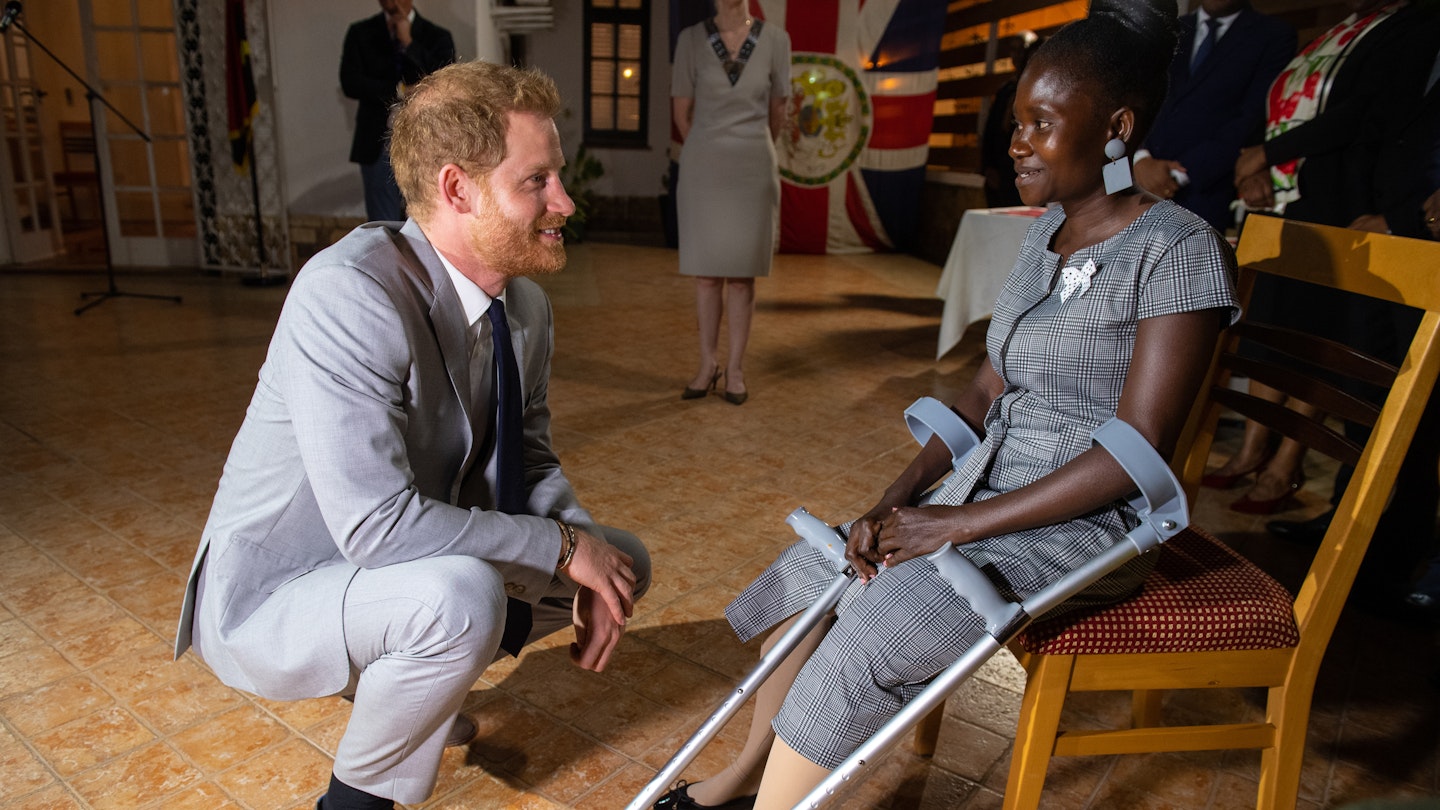Harry and Meghan’s royal tour of southern Africa has been chock-full of incredibly joyous moments but there have also been some poignant ones, not least Harry following in his mother’s footsteps in Angola.
The Duke of Sussex visited a Halo Trust mine-site. It was with Halo Trust that his mother, the late Princess Diana, had worked in 1997 to bring worldwide attention to the number of minefields in Angola and the people who had been seriously injured by mines.
One such person was Sandra Thijika who met Diana in 1997 at an orthopaedic workshop when she was just 13 years old. After watching Sandra being measured for a prosthetic leg, Diana and Sandra were famously photographed under a fig tree with Sandra sitting on Diana’s lap. Sandra said of the occasion, "She was speaking to me and I felt very happy, I felt very complete to have the attention of a princess.”

Harry and Sandra met at the official renaming of the hospital, which is now the Princess Diana Orthopaedic Centre in honour of Harry’s mother. Sandra is now a mother of five and told the Duke that she named a daughter after Diana. The Duke also met with another landmine victim, Justina Cesar who lost her leg at just 3 years old and also met Diana in 1997 when she was 15.
At the renaming ceremony Harry gave a short and emotional speech, saying:
“I am humbled and honoured that my mother’s work and commitment to de-mining continues to inspire and that her legacy is being recognized and celebrated today with the naming of the centre in her honour,”
Earlier in the tour Harry, now the same age his mother was then, helped detonate a mine. Harry previously visited Cuito Canavale, a former battlefield in Angola with a large number of mines in 2013 on a private trip and in 2011 he visited Halo’s de-mining programme in Mozambique. The Halo Trust report that they’ve cleared over 100,000 and in fact the minefield that Princess Diana so famously visited is now a bustling street with a lively community. The is a tree, called the Diana tree, which marks the place she was photographed walking in 1997. The Duke of Sussex was able to meet a few of the children who were born on that street and did not know it had previously been a minefield. While many have been removed, there are still thousands of mines to be cleared.
